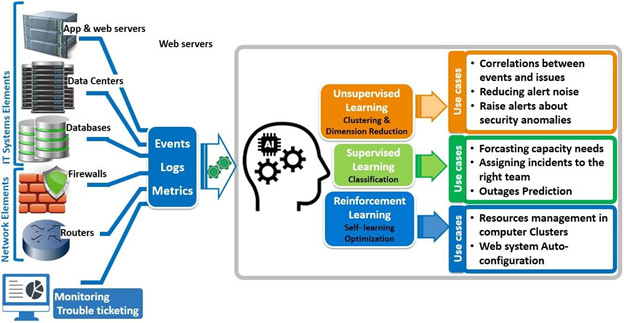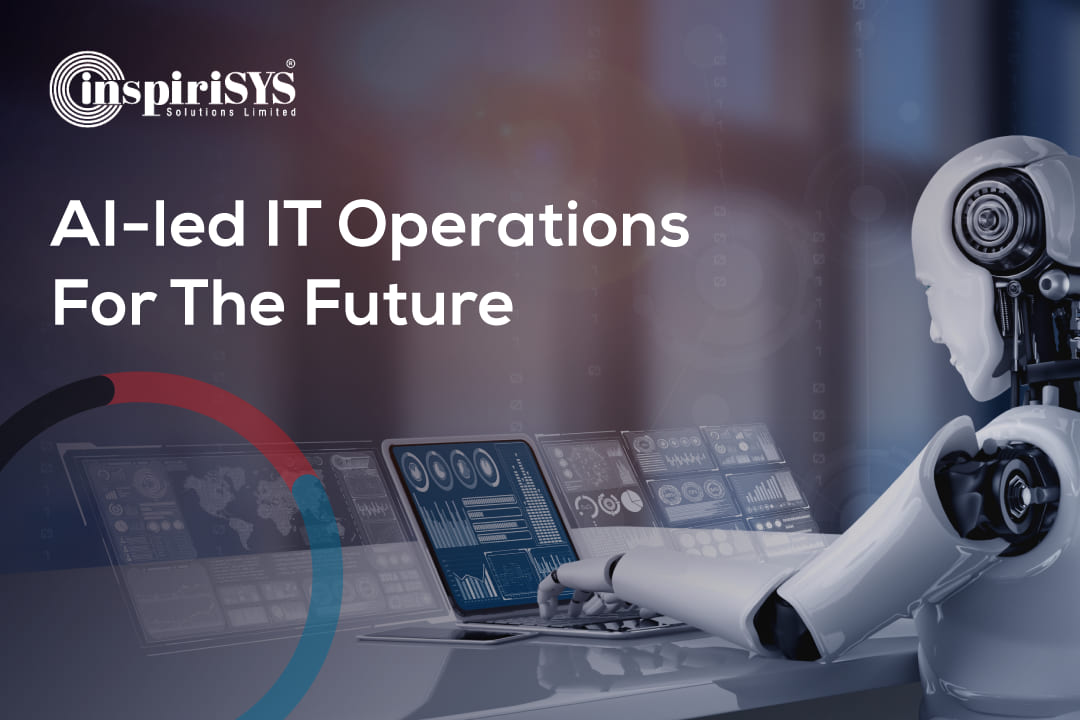What is AIOps?
AIOps is artificial intelligence for IT operations. It refers to the strategic use of AI, Machine Learning (ML), and Machine Reasoning (MR) technologies throughout IT operations to simplify, streamline processes and optimize the use of IT resources. AIOps entails explaining the application of Artificial Intelligence and its result to humans so they can clearly understand, rely on and trust the outcome. It lifts the veil on IT Operation’s computing and logic.
Adoption of AIOps

According to a study by Digital Enterprise Journal (DEJ)
-
There has been an 83% increase in organizations deploying or looking to deploy AIOps capabilities
-
64% of the surveyed enterprises find AIOps solutions confusing
-
Out of those, 65% were actually adopting AIOPS
The question is, if AIOps is appealing to so many companies, then why is it so confusing? This is because no one knows how it works.
Organizations are enticed to buy an AIOps solution to transform their business, but the users are hesitant in entrusting their operations to some mysteriously driven platform which gives absolutely no explanation.
Therefore, companies can’t fully utilize modern AIOps solutions.
A Deloitte business survey found that 53% of AI adopters cited “lack of transparency” as one of their major concerns, while 54% of respondents were worried about making bad decisions based on AI recommendations and 55% of respondents feared the liability for decisions and actions taken by AI systems.
Deep Dive into AIOps Architecture

In a mature environment, AIOps works like a wonder for IT Operations. Let us use an illustrative example to understand the working of an AIOps solution.
There are multiple monitoring tools in an environment which keeps monitoring the key applications, servers and devices in your infrastructure. When an incident occurs on a server, the monitoring tool throws multiple alerts because of which multiple tickets get created in the ITSM tool.
A support engineer checks the alerts to find the root cause and works only on that ticket. The other tickets get cancelled in this process and the support engineer’s time and efforts are wasted. The number of tickets in the ticketing tool increases because of all the cancelled tickets.
Conversely, in an ideal situation, AIOps saves the day by doing Event Correlation, Event Suppression & Event Classification by finding the parent alert and auto-ticketing it to the ITSM tool. It also shows different dashboards and reports to track the proper information about the environment.
Let’s understand the fundamental factors that lead to these outcomes. Some of these factors include:
Training Data
This is a sample dataset of rows and columns with each row containing an observation which could be in the form of text or image. This undergoes processing before being used to train the model.
Machine Learning Algorithms
The processed training data is fed as input into the chosen machine learning algorithms which are trained to find patterns and relationships in the dataset across various features.
Features
These are key characteristics, attributes, parameters or properties extracted from the original raw data on which analysis or prediction will be done.
Model
The output of the machine learning algorithm runs on input data and represents what was learnt by the machine learning algorithm during the training process.

The Benefits of AIOPS
When users are comfortable with AIOps owing to its transparency, they leverage it more for their everyday tasks and activities. It saves staff time and frees them to innovate and cultivate strategies that can help the business grow. This also ensures that the high-cost AIOps investment yields effective results while IT supports business to drive success.
Some key benefits of AIOPS are:
Performance monitoring
AIOps enables organizations to build a more proactive approach to performance monitoring. Reactive monitoring can potentially cost businesses hundreds of thousands of dollars in lost revenue. With AIOps, rather than reacting to issues after they arise, organizations can identify, remediate and optimize performance issues in real-time—before they become system-wide problems.
Infrastructure topology
Most organizations use static infrastructure maps, which offer limited insights and can quickly become outdated. AIOps solutions, on the other hand, enable dynamic topology. Dynamic topology captures the resources and their relationships as the environment changes. In addition to providing near-real-time visibility, dynamic topology grants organizations the ability to compare the current topology with historical versions. Organizations that utilize AIOps-led infrastructure typology can answer both “What happened?” and “What is happening?” with details on how topology and status have changed over time.
Noise reduction
Alert fatigue is when an overwhelming number of alerts causes an individual to become desensitized to them. It is a huge problem in incident response. AIOps minimizes alert fatigue by preventing alert storms from overwhelming your employees. AIOps solutions filter and correlate meaningful data to suppress low-priority alerts and group together alerts that are related. By delivering intelligent alerts that are prioritized based on user and business impact, AIOps solutions limit the noise and ensure your critical alerts get noticed.
Anomaly detection
Detecting and fixing problems as your IT infrastructure becomes more dynamic is no easy feat. Trying to understand the root cause of a potential issue can be extremely difficult to do, which makes anomaly detection critical in many cases. AIOps makes anomaly detection faster and ultimately, more effective. That’s because AIOps can monitor the difference between the value of a KPI and what the machine learning model predicts. Then, it can flag deviations that wreak havoc.
Example of an AIOPS use case in IT Operations

Some common use cases or problem areas that can be solved with AIOps are:
-
Identifying problems based on anomalies or deviations from normal behavior
-
Forecasting value of a certain metric to prevent outages or to improve operational readiness
-
Grouping or clustering alerts, events or logs based on symptoms or text descriptions
-
Correlating events to reduce noise in IT data and extract actionable events
-
Deriving application or server health based on multiple sensors or telemetry data
-
Identifying correlated time series metrics or symptoms for faster root cause inference
-
Finding similar incidents to accelerate incident resolution
-
Named entity recognition to enrich incidents for faster processing of incidents
-
Predicting Incident assignment group based on incident attributes
-
Incident classification using natural language processing
These and many more useful business use cases can be achieved through a sustainable AIOps model. Here’s an example of a particular situation where the benefits of using AIOps are clearly visible compared to the manual process.

Challenges of AIOps
As clearly shown above, to produce an outcome, AIOps relies heavily on the data set and the trained model. It is extremely likely that the result of AIOps may be misleading, if the model is either incorrectly trained or trained with a poor data set or the incoming data is no longer within the scope of trained datasets.
On the flip side, however, implementing an AIOps platform also presents several challenges:
-
Expertise: There’s an intimidating barrier to entry because extensive data science expertise is required
-
Infrastructure: Expensive and specialized infrastructure and deployments are needed
-
Time to value: AIOps systems can be difficult to design, implement, deploy and manage, so return on investment always takes time
- Data: The volume, quality and consistency of data produced by modern IT operations can be overwhelming and difficult to wrangle into something that can be used for modelling
Closing Thoughts
While understanding and implementing AIOps might not be an easy task for many of us, it is the future of IT Operations.
Enterprises around the globe are quickly adopting AIOps. However, they are still a long way away from utilizing it to its fullest potential. With the support of proper AI/ML algorithms, the right data sets & other automation tools, AIOps has the potential to transform the digital transformation journey of any organization. At InspiriSYS, we offer cutting-edge AIOps solutions that will take your IT Operations to the next level. Get in touch with us to enhance your digital transformation journey.







